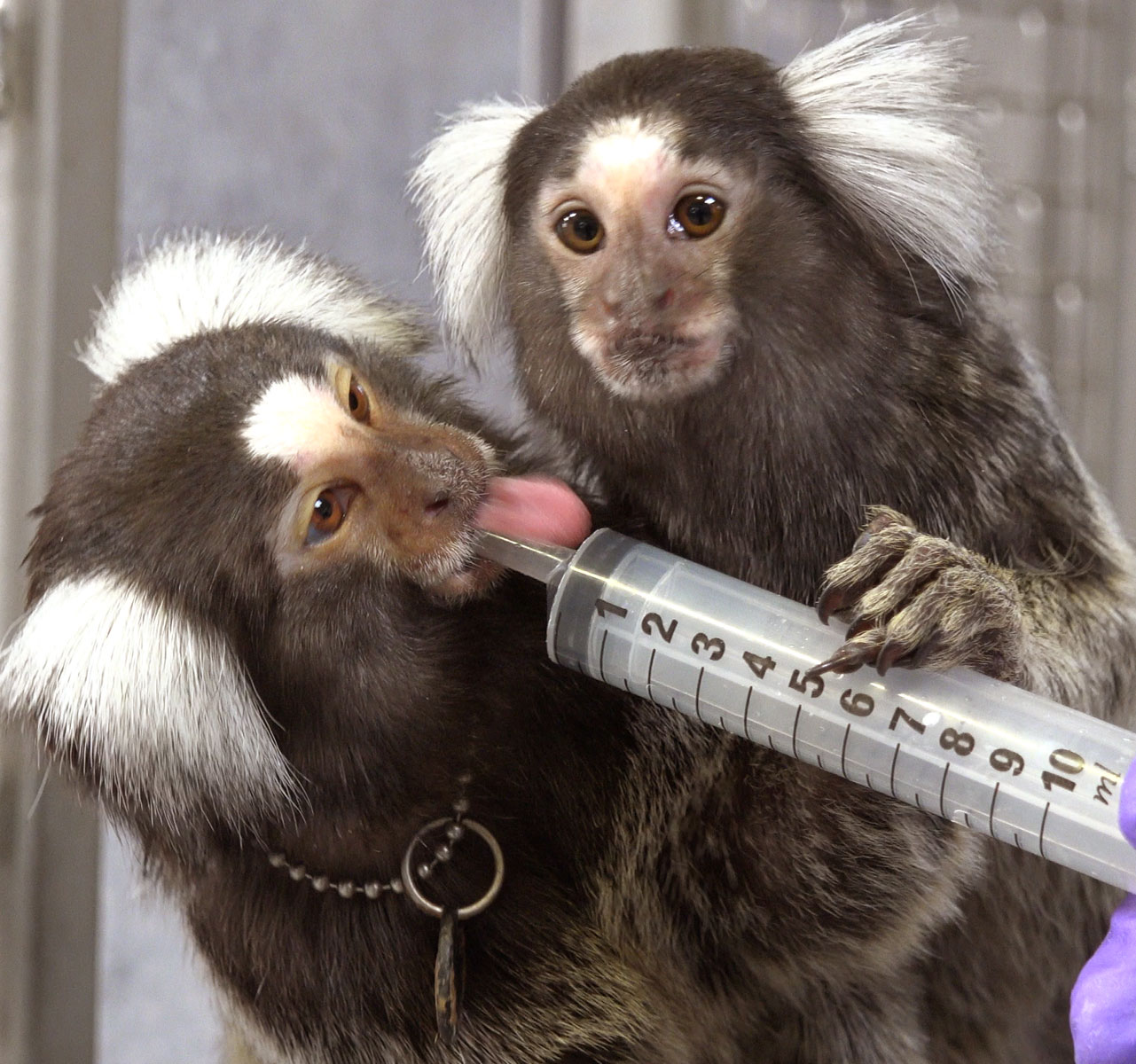BPRC has engaged in animal training, designed to get to the animals to cooperate with scientists of their own accord, for quite a few years now. The objective of the training is to ensure that the experiments can be conducted in an easy and anxiety-free manner. This is beneficial both to animal welfare and to the research we carry out.
Life-long training

BPRC finds itself in a happy position that is unique for Europe – that of employing animal trainers whose only task is to train animals and further improve BPRC's enrichment methods. Training can be an important aspect of the process through which we select animals for our studies. Animals that learn quickly and prove cooperative are more likely to be chosen for participation in studies.
The main objective of the training we give the animals is to improve the animals' well-being and the quality of our research projects. To this end, BPRC's animal trainers always use innovative methods to ensure that the studies are conducted in the best possible manner.
Urgent wish to train animals properly
We have always focused on training our animals, but we have taken our training to a different level since 2008/2009, thanks mostly to our new social enclosures, both in the breeding colony and for experimental animals. Since we had an urgent wish to train our animals in such a way that they would agree to cooperate with our scientists of their own accord, we hired our first animal trainer. We now employ two animal trainers and some 28 animal care workers, some of whom know how to train monkeys, as well. Furthermore, our animal trainers are involved in international programmes designed to further develop these training methods. They share their expertise with other research institutes – for instance, by giving lectures or teaching workshops.
Voluntary cooperation
We use training methods designed to get our animals to cooperate with our researchers to the maximum extent possible, thus reducing the amount of anxiety they experience during the experiments. This positively affects both animal well-being and the quality of the studies we conduct. For example, thanks to our training methods, our animal care workers do not have to squeeze the animals while administering them injections. The trick is to get the monkeys to offer up a body part of their own accord, e.g. by offering them a treat, such as a raisin. They will perform the requested action in exchange for a treat.
Medications administered through oral suspension
Other examples of treats (‘positive reinforcement’) include lemonade, peanuts and small marshmallows. Our marmosets also like a little bit of ‘gum’, extracted from Brazilian trees. We also seek to administer medications through syringes that the animals will suck on. We provide intensive training to get our monkeys to drink from syringes, but this is proving quite hard in practice, as monkeys have extremely well-developed taste buds and they don't like the bitter taste of suspensions containing medicine. However, some monkeys are more likely to drink these suspensions than others, which is another thing that helps us select experimental monkeys.
Early training
We start providing very basic training when the monkeys are still in the breeding colony. We teach them to take something from a human hand, in a very controlled manner. We also teach them to drink from syringes. We then further develop this type of training in the other enclosures. For instance, we teach the monkeys to turn to the animal care worker to receive an injection, or to open their mouth so that their mouth can be inspected. We often collect marmoset saliva by putting something delicious on a cotton bud, then having the marmosets suck the cotton bud. We get rhesus and crab-eating macaques to chew rope, but we do not always have to add a flavour to the rope.
Giving extra attention and preventing boredom
Depending on how quickly the animals learn, and what is needed for a particular study, we can teach the monkeys more and more tricks. However, the training sessions are not entirely designed to prepare the monkeys for their studies. To the animals, the training sessions are moments of additional attention, which prevent them from getting bored. For instance, when we see that an animal is engaging in stereotypical undesirable behaviour, such as running in circles or constantly moving to and fro in the cage, our trainers will immediately spring into action, giving the animal a special training session designed to encourage positive behaviour.
Animal welfare is more important than time or money
The downside of training animals to cooperate is that it often increases the duration of our studies, meaning our studies will be more expensive. However, as far as we are concerned, the well-being of our animals outweighs these concerns. For instance, we collect capillary blood rather than venous blood to be able to monitor the parasite development in a monkey's blood, as this only requires a small and nearly painless prick to a monkey's thigh. We literally take one drop of blood. Back in the old days, we had to squeeze the animals to get that one drop of blood. Now our animal care workers provide the monkeys with intensive training designed to get them to offer up a foot or leg of their own accord. This takes a lot more time, but in our opinion, it is worth it.

